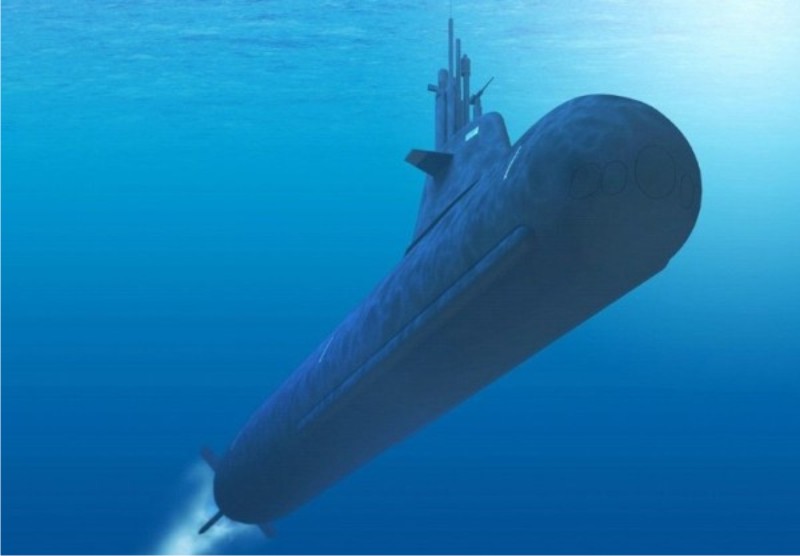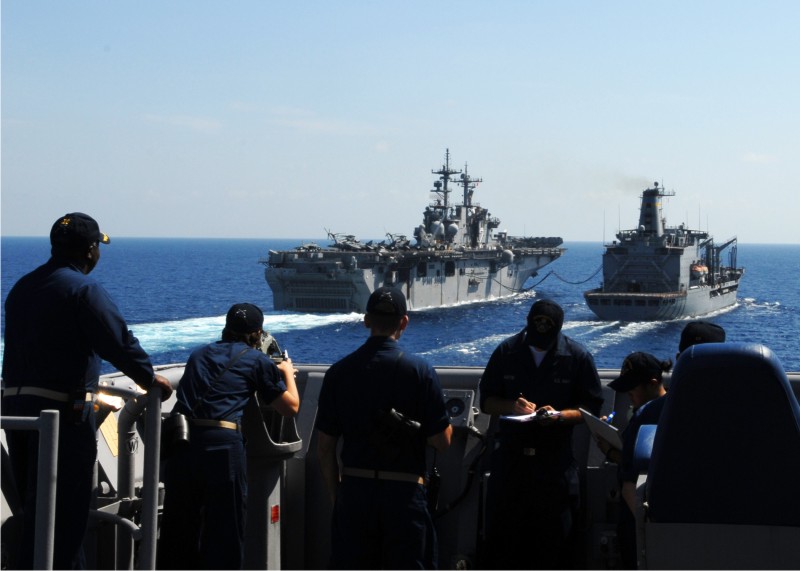
Welcome to MSW’s Scuttlebutt! Here’s the news for the day.

Women to Serve on Subs, Gates Tells Congress
Source: US Department of Defense
WASHINGTON --- The Navy plans to repeal its ban on women serving on submarines, Defense Secretary Robert M. Gates has informed Congress. Gates signed a letter Feb. 19 informing Congress of the Navy’s plan to lift the policy, which it intends to do through the phased-in assignment of women to submarines, Pentagon Press Secretary Geoff Morrell confirmed today.
The secretary endorsed the plan, the brainchild of Navy Secretary Ray Mabus, Morrell said. No change can take effect until Congress has been in session for 30 days following the notification, Navy Lt. Justin Cole, a Navy spokesman said.
Mabus, Chief of Naval Operations Adm. Gary Roughead and other Navy leaders have looked closely at the issues involved with integrating women into the submarine force, including close working conditions and accommodations, he said.
No funds will be spent to reconfigure submarines to accommodate female crew members until the Navy Department presents the phased-approach plan to Congress.
Mabus has been a strong proponent of the policy change since being confirmed to his post in May.
"I believe women should have every opportunity to serve at sea, and that includes aboard submarines," he told reporters in October. Roughead, in a statement issued in September, said his experience commanding a mixed-gender surface combatant ship makes him “very comfortable” with the idea of integrating women into the submarine force.
"I am familiar with the issues as well as the value of diverse crews,” Roughead said.
The integration of women into the submarine force increases the talent pool and therefore, overall submarine readiness, Cole said.
“We know there are capable young women in the Navy and women who are interested in the Navy who have the talent and desire to succeed in the submarine force,” he said. “Enabling them to serve there is best for the submarine force and our Navy.”
The policy change – and the Navy’s ability to work through the issues involved -- is not without precedent, he noted. In 1993, the Navy changed its policy to permit women to serve on surface combat ships.
First Fleet Tanker for Indian Navy Launched at Muggiano
Source: Fincantieri
Today at Fincantieri’s shipyard in Muggiano (La Spezia) there was the launch of the first of two fleet tankers ordered by the Indian Navy, with delivery scheduled by the end of the year. Present at the ceremony were Arif S. Khan, ambassador for the Republic of India in Italy, Corrado Antonini, Chairman of Fincantieri, Admiral Franco Paoli, commander of the Naval Department of the Upper Tyrrhenian Sea.

First announced at Euronaval in 2008, the order is the first surface vessel India has ever made to a European company and followed a selection procedure with strong international competitors, especially from Russia and Korea.
At 175 metres long, 25 wide and 19 high, the fleet tanker is a supply and logistic support vessel with a displacement at full load of 27,500 tonnes and a propulsion system of two 10,000 kW diesel engines enabling her to reach a maximum speed of 20 knots. Notable features of the vessel are its propulsion system incorporating a shaft with adjustable pitch propellers and a flight deck for medium weight helicopters (up to 10 tons).
Maximum passenger capacity is 250 including crew and additional forces.
Equipped with double hatches the tanker can refuel four vessels at the same time.
In accordance with the new Marpol regulations of the International Maritime Organization regarding protection of the environment, the ship has been built with a double hull. This will afford greater protection to the fuel tanks, thereby avoiding the risk of pollution in case of collision or damage.
Cooperation with India started in 2004 when Fincantieri drew up two contracts with Cochin shipyard for the design of an engine (one of the most powerful non-nuclear propulsion systems in the world), technology transfer and provision of complementary services for the construction of the Indigenous Aircraft Carrier (IAC). Furthermore, in 2007 the company delivered the “Sagar Nidhi”, an oceanographic vessel for the National Institute of Ocean Technology (NIOT) of Madras, which is already operating off the Indian coast to the great satisfaction of the customer.
Fincantieri considers the East market and the development of cooperation with the high prestige Indian partner to be strategic, as witnessed by two events – the opening in recent years of a representative office in New Delhi and the company’s participation every year at the leading naval fair, “Defexpo”.
The partnership has been successful as the Indian Navy has exercised its option (provided under the original contract) and ordered a second sister fleet tanker, which is under construction at Fincantieri’s Sestri Ponente (Genoa) shipyard for delivery in late 2011.
Kockums Receives Overall Design Order for Next-Generation Submarine
Source: Kockums AB
Kockums AB, part of ThyssenKrupp Marine Systems, has signed a contract with FMV (the Swedish Defense Materiel Administration), concerning overall of the design phase of the next-generation submarine.
This confirms the intention to develop Sweden’s submarine capability. Kockums is prime contractor for the order.

The Supreme Commander of the Swedish Armed Forces has emphasized the importance of acquiring the next-generation submarine on a number of different occasions.
The next-generation submarine features several advances in the development of underwater technology and marks the adaptation of submarines to meet current and future threats and to conduct the international mission now required. This refers particularly to the submarine’s role as an information gatherer.
Next-generation also refers to further refinements in terms of stealth technology. The submarine will be able to see and hear everything over a wide area, while itself remaining undetected. It will be designed to be efficient in the Baltic and other littoral waters.
“This is an important first step, not only for Kockums, but for the Swedish Armed Forces as a whole. We shall now be able to maintain our position at the cutting edge of submarine technology, which is vital in the light of current threat scenarios. HMS Gotland demonstrated what she is capable of during two years of joint exercises in the water off the USA. This next-generation submarine marks a further refinement of technology,” states CEO Ola Alfredsson, commenting the news.

New Naval Combat Helicopter
Source: Australian Department of Defense
The Minister for Defiance, Senator John Faulkner, today announced that the Government has given first pass approval for a major project to provide the Australian Defense Force with a new naval combat helicopter.
Project AIR 9000 Phase 8 is included in the Defense Capability Plan to provide naval warships with a new combat helicopter.
Senator Faulkner said that two potential helicopters had been identified. "The Government has decided that the new helicopter will be either the Sikorsky-Lockheed Martin built MH-60R sourced through the United States Navy, or the NATO Helicopter Industries NH90 NFH sourced through Australian Aerospace".
Senator Faulkner said that a competition would be held between the two helicopter options which would be cost-capped by the Defense Materiel Organization through the tender process.
"The new naval combat helicopter will enhance the Royal Australian Navy's ability to conduct a range of maritime operations. It will be capable of undertaking anti-submarine warfare and will be equipped with air-to-surface missiles," Senator Faulkner said.
"This fleet of combat helicopters will form the centerpiece of naval combat aviation to beyond 2040.
"The new helicopter will greatly extend the eyes and ears of our surface fleet and allow the conduct of combat and support operations in the complex and demanding maritime environment.
"They will replace the current fleet of Seahawk anti-submarine warfare helicopters and fill an operational need left by the cancellation of the Seasprite project," Senator Faulkner said.
The procurement of the new naval combat helicopters as a matter of urgency was announced in the 2009 Defense White Paper. This decision demonstrates the Government's commitment to this important Defense capability.
Sufficient helicopters will be acquired to provide at least eight helicopters concurrently embarked on ships at sea, which under the White Paper requires a fleet of 24 helicopters.
"The competitive process would commence in the next few months with the Government making a final decision about the new helicopter in 2011," Senator Faulkner said. "This schedule will enable the new helicopters to be delivered from 2014.
"Any decision Government makes in 2011 will take into account all relevant considerations including capability, cost, interoperability with other ADF capabilities, Australian industry opportunities, risk and value for money," Senator Faulkner said.
The Minister for Defense Personnel, Materiel and Science, Greg Combet, said that the decision to progress the project via a competitive tender was consistent with the Kinnaird and Mortimer procurement reforms.
The tender will allow the companies to offer innovative solutions that satisfy the capability, cost and schedule requirements and detail what opportunities they will offer local industry.
"A competitive process will ensure value for money for the tax payer and ensure the project's acquisition strategy provides the Government with the best possible information to support a decision for this vital capability," Mr Combet said.

USS Sargo (SSN 583)
Today’s website is the about the finding of the USS Sargo (SSN 583). Enjoy.
This Day in U.S. Naval History
1776 - The first amphibious landing operation takes place. A Continental naval squadron, under Commodore Esek Hopkins, lands Sailors and Marines, commanded by Capt. Samuel Nicholas, on New Providence Island in the Bahamas. They capture urgently-needed ordnance and gunpowder.
1871 - The Navy Medical Corps is established.
1883 - Congress authorizes four modern ships of steel, "A, B, C, D Ships"; three cruisers, Atlanta, Boston and Chicago, and dispatch boat Dolphin.
1915 - The Office of Chief of Naval Operations (CNO) is established.
1915 - Congress creates the Federal Naval Reserve. Under it, the Naval Reserve Force is built up.
1960 - USS Sargo (SSN 583) returns to Hawaii from an Arctic cruise of 11,000 miles - 6,003 miles under the polar ice.
Photo of the Day

Sailors aboard the amphibious dock landing ship USS Harpers Ferry (LSD 49) stand watch at the port bridge wing as the ship approaches the Military Sealift Command fleet replenishment oiler USNS Tippecanoe (T-AO 199) for underway replenishment.
Gator











